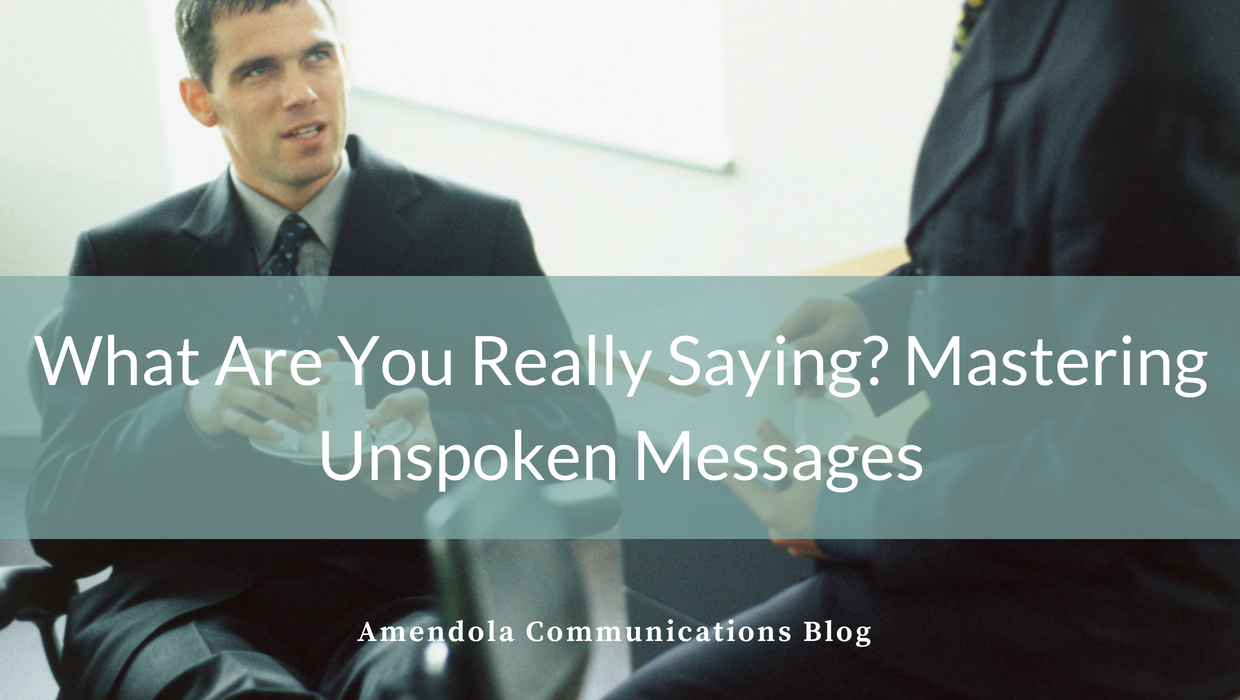Have you ever heard the phrase, “it’s not what you say but how you say it?” This “how,” or nonverbal communication, accounts for more than 90 percent of what we convey. In fact, former UCLA Professor Albert Mehrabian found that the use of one’s voice makes up 38 percent of what we communicate and body language comprises up to 55 percent. By not paying attention to cues, you could be mixing messages or sending unspoken messages in ways that go beyond the Oxford comma debate.
Depending on how the words are delivered, carefully crafted messages can be disregarded, along with an expert’s credibility. This spokesperson could instead appear disinterested or worse. Is that person carefully pondering the question or thinking of what is for dinner? That answer lies in the interpretation.
Conference calls
A major part of work days, including a high percentage of media interviews, are spent on the phone. Many of us jump from one conference call to another without a second thought. However, just because someone can’t see you, does not mean your actions are unnoticed. Here are some pointers for navigating these interactions:
- Know your key messages: Don’t memorize them; rather, internalize the main three points you want to leave behind. That way, they will naturally integrate into the conversation.
- Smile: This truly does change how your voice projects and can be heard on the other end.
- Speak calmly and confidently: Voice tone can portray openness, knowledge and legitimacy of the person talking. Using frequent “ums” or sounding overly emotional can have the opposite effect.
- Mute the sound track: Background noise can distract both ends of the conversation and take away from the main points. This may also come across as though the call was not a high enough priority to find a quiet location.
In-person Meetings
Whether you are embarking on a media tour, going for coffee or taking meetings at tradeshows, these in-person encounters are a great way to make a lasting impression make sure it is a positive one. Your audience, including reporters and business prospects, can now see you in addition to hearing you, so there are more messages being conveyed in meetings that typically run longer than telephone interviews. Make sure they are all working in your favor.
- Speak with your body language: No, this does not mean the cha-cha, floss or any other dance du jour. This refers to how you carry yourself, so you appear approachable but not sloppy; confident without coming across as arrogant. It is the details, including making eye contact and leaning forward a bit to the person you are speaking with to show you are engrossed with the conversation.
- Appear engaged: Smile periodically and occasionally nod your head in agreement with the person you are meeting. Beware of crossing your arms you may be cold, but it will come across as disinterested.
- Respect personal space: Provide enough distance to keep the other person comfortable but not so far away that you lose the connection.
- Remove distractions: Show the reporter, analyst or prospect that they are important enough to have your undivided attention. Turn the cell phone off, or keep it on vibrate, and put it away. The temptation to check messages is strong, so remove it from the equation.
Many of the points discussed above are subjective. More than anything else, read how your nonverbal communication is being received, so you can adjust as needed. Great spokespeople leave an impression because they know how to present themselves and understand how they are being received. Listening to the unspoken messages of others will help you become a master communicator.
